The Melbourne Museum proudly presented Naadohbii: To Draw Water, a tri-national exhibit that unites the First Peoples from Australia, New Zealand and Canada. In solidarity with one another, Indigenous nations came together to illustrate and comment on political, environmental and cultural practices in relation to water.
The name of the exhibition “Naadohbii”, the WAG-Qaumajuq gallery explains, translates to “to draw/seek water.” The name was gifted by Elder Dr. Mary Courchene, deriving from the Anishinaabemowin language of Treaty 1 territory Winnipeg, Canada. From fresh to saltwater, over 20 artists reflect on their ancestral history, identity and culture as well as their role to protect and preserve the spirit of water.
The privatization and misuse of water compromise the amount left for the survival of the environment. The Murray-Darling Basin Authority outlines the Murray-Basin environmental crisis as an example. These unhealthy riverbeds worsened with droughts, leading to outbreaks of blue-green algae, water levels dropping and exposure to acid sulphate soils.
The degradation of the environment has negative effects on wildlife and communities' health, driving the need for this exhibition. Naadohbii: To Draw Water exhibition includes pieces that speak on such issues whilst also promoting the United Nations Sustainable Development Goals for Sustainable Cities and Communities, Life Below Water and Clean Water and Sanitation.
The climate change conversation continues, but the perspectives broaden with the addition of Indigenous voices. “For First Peoples, our country of earth, sky, and water grounds us in our history, our identity and our futures, and water is pertinent to the survival of all of three of these aspects to who we are," expressed Kimberley Moulton, the senior curator of south-eastern Indigenous collections at Museums Victoria to Timeout.
In partnership, Museums Victoria worked alongside New Zealand’s Pātaka Art + Museum and Canada’s Winnipeg Art Gallery (WAG-Qaumajuq) to create this cultural exhibition. Recent unsustainable treatment of the world’s ponds, seas, lakes, rivers, creeks, streams and aqueducts does not honour First Peoples' sovereign connections and cultural practices linked to water.
According to WAG-Qaumajuq, Naadohbii: To Draw Water takes into account the United Nations declaration on the rights of Indigenous peoples in addition to the Truth and Reconciliation Commission of Canada’s Calls to Action. It goes on to express that it “recognizes the power of art in enacting change” contributing dialogue towards the water in relation to the changes that face the environment.
According to the UN Environment Programme over 85 per cent of the planet's wetlands have been lost over the last 300 years. On top of this, The World Health Organization estimates waterborne diseases cause 485 000 diarrhoeal deaths each year. The concern about water handling has increased within the global community as it may limit food production, threaten human health and reduce ecosystem functionality.
Although approaches towards protection may vary, the ongoing theme within the exhibition is that of water not being exclusively a resource, but instead being spiritual and sacred sustenance, a giver of life and life itself.
The health or nature of a body of water is reflective of Indigenous people's physical and spiritual well-being. Whilst the artists confront issues such as the harsh realities of dwindling riverbeds and receding shores, the underlying hopeful message of these pieces is that of rejuvenation and revival of old practices.
At the beginning of the gallery is contributing artist Uncle Rex Greeno’s nighgr. His piece, a paperbark canoe, was made after he undertook extensive research into his ancestral Tasmanian Aboriginal peoples’ watercraft methods.
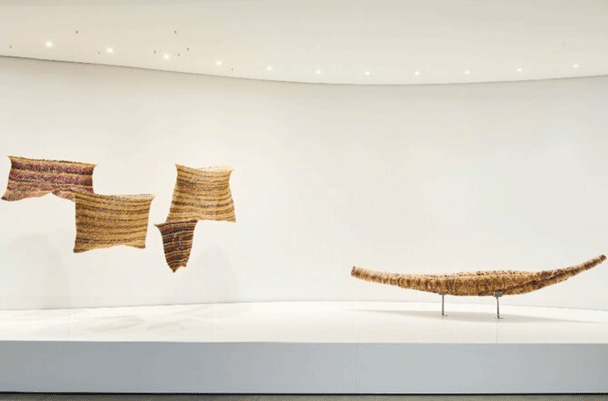
His ancestors were bark canoe makers, and his own grandfather passed down his knowledge of fishing and experiences at sea. Thus, his piece revives the practice, skills and knowledge of these essential watercraft.
To the left of this is Regina Pilawuk Wilson’s Walipan 1,2,3, and 4 (Fish Net). Wilson recreates a customary practice for women in the Peppimenarti community by weaving intricate fish nets. These are made from the pandanus plant and are naturally dyed.
The colours are manipulated with the ash of burnt bark from eucalyptus, turning yellows to orange to reds whilst simultaneously painting the landscape of her country. The series of streams and pools that reside at the bottom of the rock formation overlooking the community is a sacred site in which these nets are utilized.
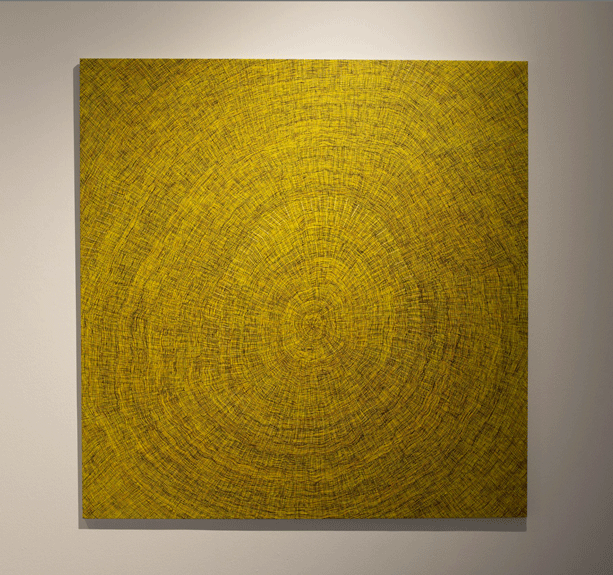
Inspired by the practice of weaving, Wilson continues by creating an acrylic painting. Within the painting, she examines the intrinsic link weaving has to water. Transferring this practice to canvas redefines its meaning, now referencing the new form of communicating this ancient knowledge by displaying it visually.
However, James Tylor takes a different approach. The original hopeful theme of restoration within the other pieces is deserted in his black and white photographs, Economics of Water. Instead, he highlights the irreparable devastation of the Murray-Darling Basin.
His piece does not allude to anything other than the dead, dry and damaged nature that was the direct result of poor water management by the state and Federal governments of Australia. His series displays the drought with an overlay of geometric golden vinyl laminate pieces that symbolize the human infrastructure of water diversion for commercial agriculture and settlements.”
Tylor highlights the fact these diversions were caused by the European colonization of the Murray-Darling River system that redirected the water to non-indigenous systems. However, according to Murray-Darling Basin Authority, for over 65,000 years prior the Murray-Darling Basin provided water, food, resources and trade routes for Indigenous people living along the waterways.
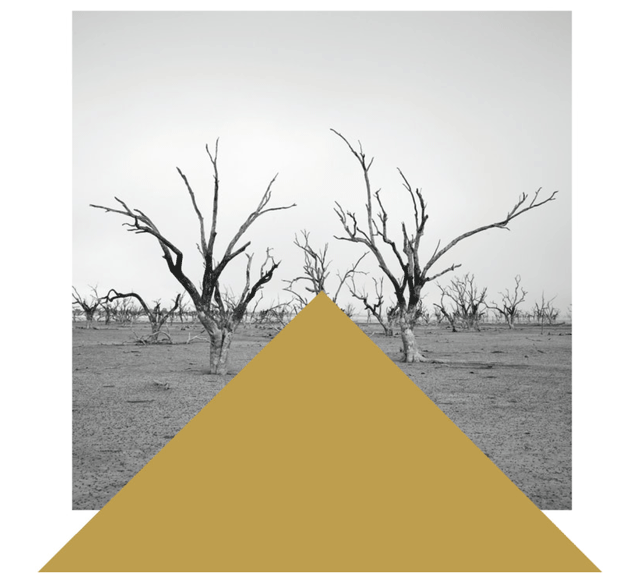
Now, according to the Murray-Darling basin authority, commercial-scale farming and multi-national owned companies have led to unsustainable water consumption draining the Murray-Darling river system. On top of this, low rainfall due to climate change has contributed to drought conditions. His piece, therefore, targets the failure to regulate water consumption to a point of no return.
Nici Cumpston’s work Oh My Murray Darling also touches on the catastrophic repercussions inflicted on the Murray-Darling River system. Cumpston explains that her art pays tribute to her ancestors who know how to sustain the environment. Her solution to nurture the rivers, she explained, was to “humanize them, so they can be empowered to have rights that protect them from harmful human intervention.”
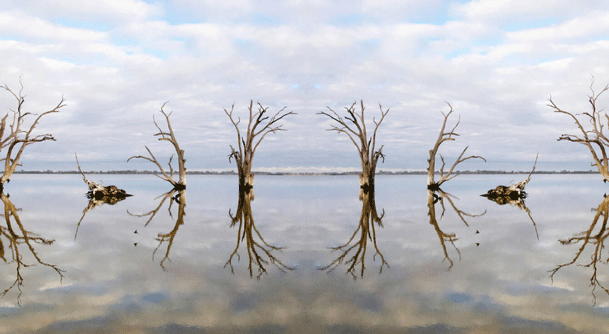
A Feast of Light and Shadows by Marianne Nicholson put on view 30 enamel bowls in front of a window in which shadow would change in response to the light. She subtly protests by creating a visual demonstration of the need to share water as opposed to a luxury.
However, Onaman Collective’s posters are clear with respect to protecting the land. The Anishnabeck and Cree reclaim the way of their ancestors by fighting on the behalf of animal clans. With declarations such as “water is sacred” and “water is life” with the addition of their signature ochre red paint (or Onaman) the group is apparent in their opposition.
Lindsay Dawn Dobbin uses the senses to her advantage. In an attempt to reconnect man and water, she creates the tactile piece Touching Ocean, receiving medicine. Dobbin invites the viewers to place their hands on the drum to physically listen and feel the ocean.
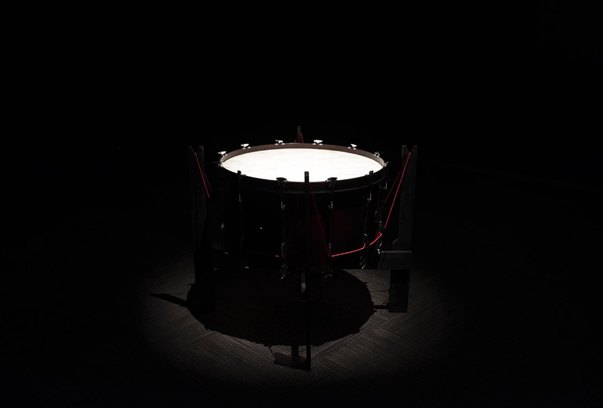
Whilst all the works are worth mentioning, Jeremy Leatinu’u’s work that was commissioned for the exhibition concludes the curatorial aim. His short films Taonga tuku iho (treasures handed down) compile to examine mundane interactions with water. He concludes the storyline with the arrival of a mysterious container of water. This instigates the viewers to consider their own relationship with water and reevaluate their own responsibility towards it.
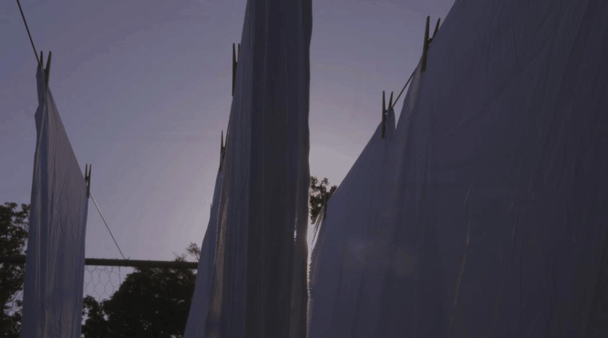
The exhibition, Naadohbii: To Draw Water, doubtlessly looks into the fragile state of the future through the lens of collective First Peoples histories. This collaboration goes beyond creating art, but instead a community that will hold each other accountable for their responsibilities towards the water.
The unsustainable handling of water is highlighted by the loss of environmental traditions and empty sacred spaces. Yet, the exhibition shines a light on protective practices, reconnection with water, its power and profound use.
For more information about other artists that contributed and further insight into the exhibition, visit the Naadohbii: To Draw Water show. Find out more about the inaugural Winnipeg Indigenous Triennial by hearing from artists, curators and board members in the encore video presentation on YouTube.
